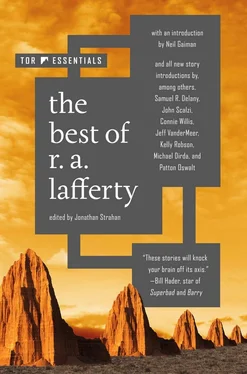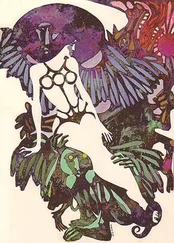It is not our object to enter into the argument of who really did first “invent” television (it was not Paul Nipkow, and it probably was not Aurelian Bentley or Jessy Polk either); our object is to examine some of the earliest true television dramas in their own queer “slow light” context. And the first of those “slow light” or selenium (“moonshine”) dramas were put together by Aurelian Bentley in the year 1873.
The earliest art in a new field is always the freshest and is often the best. Homer composed the first and freshest, and probably the best, epic poetry. Whatever caveman did the first painting, it remains among the freshest as well as the best paintings ever done. Aeschylus composed the first and best tragic dramas, Euclid invented the first and best of the artful mathematics (we speak here of mathematics as an art without being concerned with its accuracy or practicality). And it may be that Aurelian Bentley produced the best of all television dramas in spite of their primitive aspect.
Bentley’s television enterprise was not very successful despite his fee of one thousand dollars per day for each subscriber. In his heyday (or his hey-month, November of 1873), Bentley had fifty-nine subscribers in New York City, seventeen in Boston, fourteen in Philadelphia, and one in Hoboken. This gave him an income of ninety-one thousand dollars a day (which would be the equivalent of about a million dollars a day in today’s terms), but Bentley was extravagant and prodigal, and he always insisted that he had expenses that the world wotted not of. In any case, Bentley was broke and out of business by the beginning of the year 1874. He was also dead by that time.
The only things surviving from The Wonderful World of Aurelian Bentley are thirteen of the “slow light” dramas, the master projector, and nineteen of the old television receivers. There are probably others of the receivers around somewhere, and persons coming onto them might not know what they are for. They do not look much like the television sets of later years.
The one we use for playing the old dramas is a good kerosene-powered model which we found and bought for eighteen dollars two years ago. If the old sets are ever properly identified and become collectors’ items, the price on them may double or even triple. We told the owner of the antique that it was a chestnut roaster, and with a proper rack installed it could likely be made to serve as that.
We bought the master projector for twenty-six dollars. We told the owner of that monster that it was a chicken incubator. The thirteen dramas in their canisters we had for thirty-nine dollars total. We had to add formaldehyde to activate the dramas, however, and we had to add it to both the projector and the receiver; the formaldehyde itself came to fifty-two dollars. I discovered soon that the canisters with their dramas were not really needed, nor was the master projector. The receiver itself would repeat everything that it had ever received. Still and all, it was money well spent.
The kerosene burner activated a small dynamo that imposed an electrical grid on the selenium matrix and awakened the memories of the dramas.
There was, however, an oddity in all the playbacks. The film-fix of the receiver continued to receive impressions so that every time a “slow light” drama is presented it is different, because of the feedback. The resolution of the pictures improves with use and is now much clearer and more enjoyable than originally.
The librettos of the first twelve of the thirteen Bentley dramas are not good, not nearly as good as the librettos of the Jessy Polk and the Samuel J. Perry dramas later in the decade. Aurelian Bentley was not a literary man; he was not even a completely literate man. His genius had many gaping holes in it. But he was a passionately dramatic man, and these dramas which he himself devised and directed have a great sweep and action to them. And even the librettos from which he worked are valuable for one reason. They tell us, though sometimes rather ineptly and vaguely, what the dramas themselves are all about. Without these outlines, we would have no idea in the world of the meaning of the powerful dramas.
There was an unreality, a “ghostliness,” about all the dramas, as though they were made by sewer light underground; or as if they were made by poor quality moonlight. Remember that the element selenium (the metal that is not a metal), the chemical basis of the dramas, is named from Selene, the moon.
Bentley did not use “moving pictures” of quickly succeeding frames to capture and transmit his live presentation dramas. Although Muybridge was in fact working on the zoopraxiscope (the first “moving picture” device) at that very time, his still incomplete work was not known to Aurelian Bentley. Samuel J. Perry and Gifford Hudgeons did use “moving picture” techniques for their primitive television dramas later in the decade; but Bentley, fortunately perhaps, did not. Each of Bentley’s thirty-minute live dramas, however it appeared for the first time in the first television receiver, was recorded in one single matrix or frame: and, thereafter, that picture took on a life and growth of its own. It was to some extent independent of sequence (an effect that has been attempted and failed of in several of the other arts); and it had a free way with time and space generally. This is part of the “ghostliness” of the dramas, and it is a large part of their power and charm. Each drama was one evolving moment outside of time and space (though mostly the scenes were in New York City and the Barrens of New Jersey).
Of course there was no sound in these early Bentley dramas, but let us not go too far astray with that particular “of course.” “Slow sound” as well as “slow light” is a characteristic of selenium response, and we will soon see that sound did in fact creep into some of the dramas after much replaying. Whether their total effects were accidental or by design, these early television dramas were absolutely unique.
The thirteen “slow light” dramas produced by Aurelian Bentley in the year 1873 (the thirteenth of them, the mysterious Pettifoggers of Philadelphia, lacks Bentley’s “Seal of Production,” and indeed it was done after his death: and yet he appears as a major character in it) were these:
1. The Perils of Patience, a Damnable Chase . In this, Clarinda Calliope, who was possibly one of the greatest actresses of American or world drama, played the part of Patience Palmer in the title role. Leslie Whitemansion played the role of Simon Legree. Kirbac Fouet played the part of “the Whip,” a sinister character. X. Paul McCoffin played the role of “the Embalmer.” Jaime del Diablo played “the Jesuit,” one of the most menacing roles in all drama. Torres Malgre played “the Slaver,” who carried the forged certificate showing that Patience had a shadow of black blood and so might be returned to slavery on San Croix. Inspiro Spectralski played “the Panther” (Is he a Man? Is he a Ghost?), who is the embodiment of an evil that is perhaps from beyond the world. Hubert Saint Nicholas played the part of “the Guardian,” who is really a false guardian.
This Damnable Chase is really a galloping allegory. It is the allegory of good against evil, of light against darkness, of inventiveness against crude obtuseness, of life against death, of openness against intrigue, of love against hatred, of courage against hellish fear. For excitement and intensity, this drama has hardly an equal. Time and again, it seemed that the Embalmer, striking out of the dark, would stab Patience with his needle full of the dread embalming fluid and so trap her in the rigidity of living death. Time and again, it seemed that the Whip would cut the flesh of Patience Palmer with his long lash with viper poison on its iron tip that would bring instant death. At every eventuality, it seemed as though Simon Legree or the Slaver would enslave her body, or the Jesuit or the Panther would enslave her soul. And her mysterious Guardian seems always about to save her, but his every attempt to save her has such reverse and disastrous effects as to cast doubt on the honesty and sincerity of the Guardian.
Читать дальше




![Рафаэль Лафферти - Дни, полные любви и смерти. Лучшее [сборник litres]](/books/385123/rafael-lafferti-dni-polnye-lyubvi-i-smerti-luchshe-thumb.webp)
![Рафаэль Лафферти - Лучшее [Сборник фантастических рассказов]](/books/401500/rafael-lafferti-luchshee-sbornik-fantasticheskih-ra-thumb.webp)